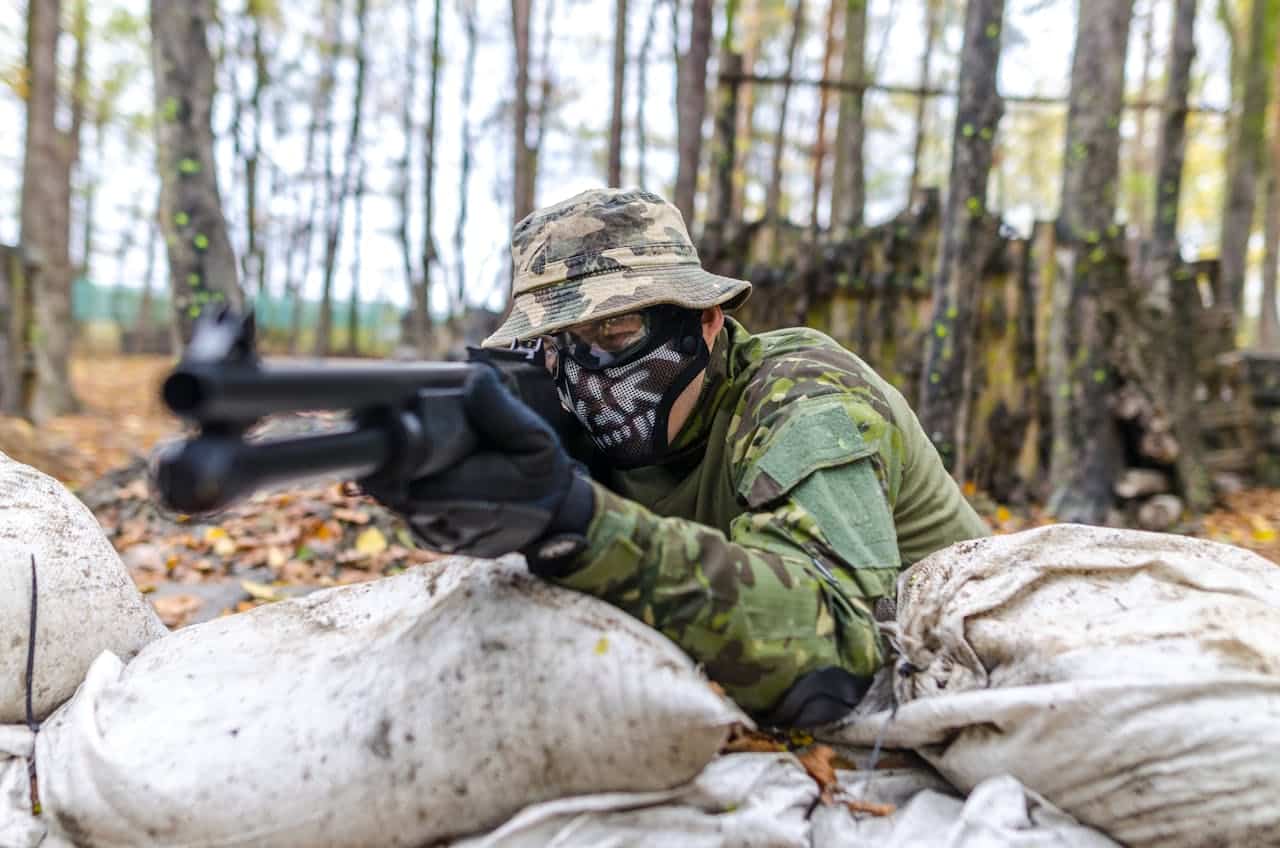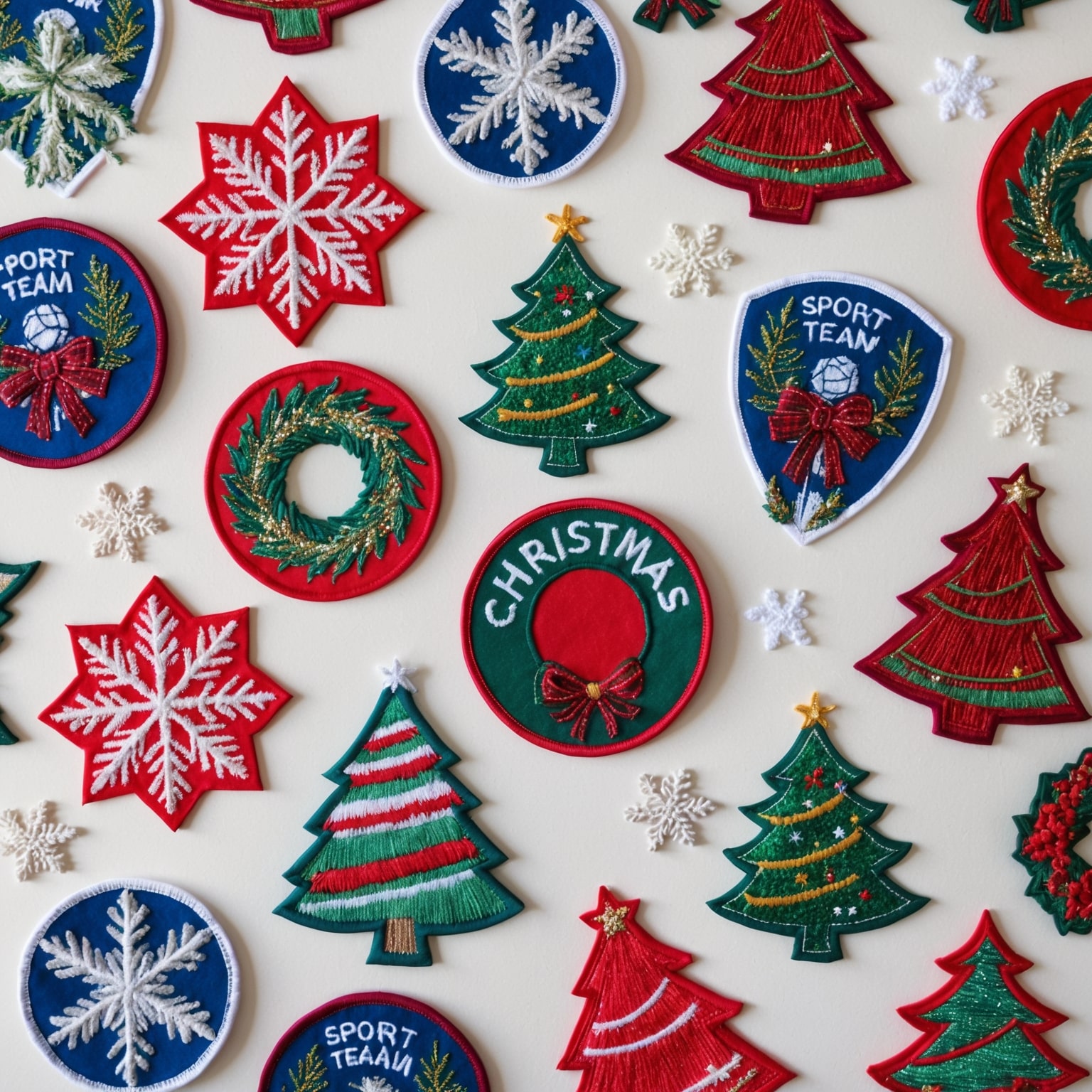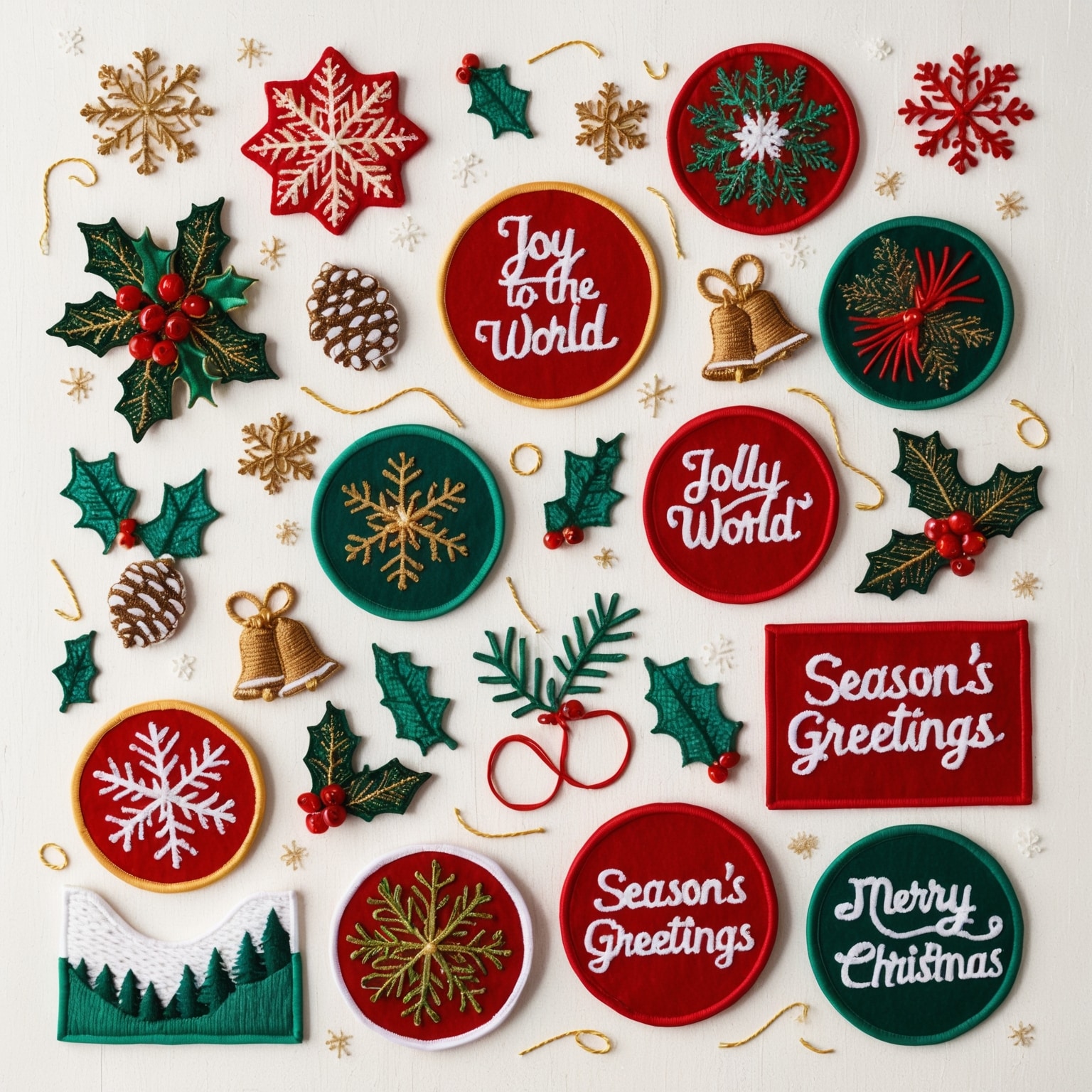In the military, where discipline, unity, and morale are paramount, every element of a soldier’s gear and uniform carries significance. Among the most symbolic and meaningful components of a military uniform are patches. These small pieces of fabric represent more than just the units to which soldiers belong; they are powerful symbols of identity, pride, and camaraderie. Patches serve as visible markers of a soldier’s journey, achievements, and the collective identity of their military unit.
This comprehensive article explores the vital role patches play in enhancing morale and pride within military units. We will delve into the history and significance of military patches, how they contribute to unit cohesion, and the psychological impact they have on soldiers. Additionally, we will discuss the design elements that make patches meaningful and the ways in which they foster a strong sense of unity and belonging within military units.
The History and Evolution of Military Patches
To fully appreciate the significance of military patches, it’s important to understand their origins and how they have evolved over time. Military patches have a long history, with their use and design reflecting the changing nature of warfare, military organization, and the role of the soldier.
1. Early Origins of Military Patches
The use of insignia and emblems in the military can be traced back to ancient times when warriors and soldiers adorned their armor and shields with symbols representing their allegiance and rank. These early insignia served as a way to identify friend from foe on the battlefield and to signify the wearer’s status within the military hierarchy.
In the modern era, the concept of military patches as we know them began to take shape during World War I. Soldiers in various armies, particularly in the U.S. military, began wearing cloth patches on their uniforms to denote their division, regiment, or battalion. These patches were often simple in design, featuring numbers, letters, or basic symbols that identified the unit.
2. The Evolution of Patch Design
As military organization became more complex and the role of soldiers expanded, the design of patches evolved to reflect these changes. During World War II, military patches became more elaborate, incorporating colors, detailed symbols, and even mottos. The use of patches spread across all branches of the military, with each branch developing its own distinctive patches to represent different units, ranks, and specializations.
The Korean War, Vietnam War, and subsequent conflicts saw further evolution in patch design, with the addition of patches for specific missions, campaigns, and achievements. Today, military patches are a standard part of the uniform, representing everything from a soldier’s unit and rank to their skills, training, and combat experience.
3. The Role of Patches in Modern Military Units
In modern military units, patches are more than just identifiers; they are symbols of pride, camaraderie, and the shared experiences of soldiers. Each patch tells a story—whether it’s the unit’s history, its mission, or the values it upholds. The design of these patches is often deeply meaningful, with every element chosen to reflect the unit’s identity and the bonds that unite its members.
The Significance of Patches in Enhancing Morale and Pride
Military patches play a multifaceted role in enhancing morale and pride within military units. They serve as visual representations of a soldier’s journey, achievements, and the collective identity of the unit. Below, we explore the various ways in which patches contribute to unit cohesion, morale, and the overall effectiveness of military units.
1. Fostering Unit Identity and Cohesion
One of the most important functions of military patches is to foster a strong sense of identity and cohesion within the unit. When soldiers wear patches that represent their unit, they are reminded of the shared mission, values, and experiences that bind them together. This sense of identity is crucial for building trust, loyalty, and camaraderie among unit members.
Practical Example:
A combat unit that has been deployed multiple times creates a custom patch featuring the unit’s emblem, a motto that reflects its mission, and symbols representing each deployment. The patch is worn by all members of the unit, serving as a constant reminder of their shared experiences and the bonds they have formed in the field.
2. Boosting Morale Through Recognition and Achievement
Patches also play a key role in boosting morale by recognizing individual and collective achievements. When soldiers earn patches for completing specialized training, participating in significant missions, or achieving certain ranks, it provides a tangible symbol of their accomplishments. This recognition reinforces the importance of their contributions and motivates them to continue striving for excellence.
Practical Example:
A soldier who successfully completes Ranger School receives the coveted Ranger tab, a patch that signifies their elite training and skill. Wearing this patch boosts the soldier’s morale and serves as a source of pride, both for the individual and their unit, as it reflects the high standards and capabilities of the team.
3. Reinforcing the Values and Mission of the Unit
Military patches often incorporate symbols, colors, and mottos that reflect the values and mission of the unit. These elements serve as daily reminders to soldiers of the principles they are expected to uphold and the goals they are working toward. This reinforcement of values is essential for maintaining discipline, focus, and a sense of purpose within the unit.
Practical Example:
A special forces unit wears a patch that features the unit’s emblem, along with the Latin motto “De Oppresso Liber” (To Free the Oppressed). The patch’s design reflects the unit’s mission of conducting unconventional warfare and supporting resistance movements. Every time the soldiers see the patch, they are reminded of the values and mission that define their service.
4. Building a Sense of Belonging and Inclusion
Patches help build a sense of belonging and inclusion within military units. When soldiers wear the same patch, it signifies that they are part of a team—a group of individuals who share a common purpose and are united by their service. This sense of belonging is crucial for fostering trust, cooperation, and mutual support among unit members.
Practical Example:
A newly formed unit creates a custom patch that all members wear on their uniforms. The patch features the unit’s emblem, a symbol of their mission, and the unit’s activation date. Wearing the patch helps new members feel included and part of a cohesive team, even as they begin to build their own shared experiences.
5. Commemorating Significant Events and Campaigns
Patches are often used to commemorate significant events, campaigns, or deployments. These patches serve as lasting reminders of the challenges faced, the victories achieved, and the bonds formed during these experiences. For soldiers, wearing a patch that commemorates a specific campaign is a way to honor the memories of their service and the sacrifices made by their comrades.
Practical Example:
A unit that participated in a major military campaign receives a custom patch featuring the campaign’s name, dates, and a symbol representing the operation. The patch is worn by all members of the unit, commemorating their participation in the campaign and the impact it had on their military careers.
6. Encouraging Professional Development and Skill Mastery
Military patches are often awarded for the completion of specialized training programs or the mastery of specific skills. These patches serve as a visual acknowledgment of a soldier’s expertise and commitment to professional development. By recognizing these achievements, patches encourage soldiers to continue honing their skills and advancing their careers.
Practical Example:
A soldier who completes advanced marksmanship training receives a sharpshooter patch, which is worn on their uniform. The patch not only recognizes the soldier’s skill but also encourages other members of the unit to pursue similar training and achieve excellence in their respective fields.
7. Supporting Tradition and Heritage
Many military patches are steeped in tradition and heritage, reflecting the history of the unit or branch of service. These patches serve as a link between past and present, honoring the legacy of those who have served before and inspiring current members to uphold the standards set by their predecessors. This connection to tradition reinforces a sense of continuity and respect for the history of the military unit.
Practical Example:
A historic military regiment adopts a patch design that dates back to its formation in the 19th century. The patch features traditional symbols and colors that have been passed down through generations of soldiers. By wearing the patch, current members of the regiment honor the legacy of their predecessors and the long-standing traditions of their unit.
8. Enhancing Unit Visibility and Recognition
Patches also play a role in enhancing the visibility and recognition of military units, both within the military and among the general public. When soldiers wear patches that clearly identify their unit, it makes it easier for others to recognize their affiliation and the specific role they play in the military. This visibility is important for building the reputation and credibility of the unit.
Practical Example:
A military unit participating in a joint training exercise with other branches of the armed forces wears patches that prominently display their unit emblem and name. The patches help other participants quickly identify the unit and its members, facilitating communication, collaboration, and mutual respect during the exercise.
9. Promoting Inter-Unit Competition and Camaraderie
Friendly competition between military units is a time-honored tradition that fosters camaraderie and motivates soldiers to perform at their best. Patches that recognize participation in inter-unit competitions, such as marksmanship contests, athletic events, or tactical exercises, serve as symbols of achievement and pride. These patches encourage soldiers to take pride in their unit and strive for excellence in all they do.
Practical Example:
A battalion that wins a prestigious inter-unit competition receives a special patch to commemorate their victory. The patch features the competition’s emblem, the year of the win, and the words “Battalion Champions.” Soldiers wear the patch with pride, knowing that they have contributed to their unit’s success and earned the respect of their peers.
Designing Patches That Enhance Morale and Pride in Military Units
Designing patches that effectively enhance morale and pride within military units requires careful consideration of various elements that contribute to their symbolism, visibility, and impact. Below, we explore key design principles that can make military patches meaningful and powerful symbols of unity and achievement.
1. Incorporating Unit Emblems and Symbols
The most important element of a military patch is the incorporation of the unit’s emblem or symbol. This emblem represents the identity of the unit and serves as a visual link between the soldier and the organization. The emblem should be prominently featured on the patch to ensure that it is easily recognizable and that it effectively communicates the unit’s identity.
Practical Example:
A Marine Corps unit designs a patch featuring the Eagle, Globe, and Anchor emblem, along with the unit’s number and motto. The emblem is placed at the center of the patch, surrounded by the unit’s name and the motto “Semper Fidelis” (Always Faithful). This design ensures that the unit’s identity is clearly communicated and that the values of the Marine Corps are reinforced.
2. Selecting Meaningful Colors
Color plays a significant role in the visibility and impact of military patches. The colors used in the patch should align with the unit’s branding and convey the authority, professionalism, and mission of the military unit. Additionally, colors can be used to symbolize specific values, traditions, or elements of the unit’s history.
Practical Example:
A Navy SEAL team designs a patch with a dark blue background, symbolizing the maritime nature of their missions, and gold lettering, representing honor and excellence. The color scheme reflects the team’s identity and reinforces the values they uphold in their service.
3. Incorporating Text and Mottoes
Text and mottoes are often included on military patches to convey the unit’s mission, values, or a specific message. The text should be clear, concise, and prominently displayed on the patch. The choice of font and size is important to ensure readability from a distance and to convey the seriousness and professionalism of the military unit.
Practical Example:
An Army airborne unit includes its motto, “Death from Above,” on its patch, positioned below the unit’s emblem. The text is bold and easy to read, ensuring that the message is clearly communicated to both unit members and others who see the patch.
4. Incorporating Elements of Tradition and Heritage
For units with a long history, incorporating elements of tradition and heritage into the patch design can help honor the legacy of the unit and inspire current members to uphold its standards. These elements can include historical symbols, colors, or references to significant events in the unit’s history.
Practical Example:
An Army cavalry unit adopts a patch design that includes crossed sabers, a symbol of its cavalry heritage, along with the unit’s founding date. The design honors the unit’s history and the role it has played in past conflicts, while also reinforcing the continuity of its traditions.
5. Balancing Modern Design with Tradition
While it is important to incorporate traditional elements that reflect the unit’s history, modern design techniques can also be used to create a visually appealing and effective patch. Balancing tradition with modern design allows for the creation of a patch that is both respectful of the unit’s heritage and reflective of its current mission and role in the military.
Practical Example:
A military intelligence unit incorporates a modern, stylized version of its emblem into the patch design, while also including traditional symbols of secrecy and knowledge, such as an owl and a key. The patch balances modern design with the unit’s historical roots, creating a symbol that resonates with both current and former members.
6. Ensuring Durability and Quality
Military patches are subjected to harsh conditions, including exposure to the elements, frequent washing, and daily wear and tear. As such, it is important to ensure that the patches are made from high-quality, durable materials that can withstand these conditions while maintaining their appearance and significance.
Practical Example:
A special operations unit selects patches made from fade-resistant thread and fabric, with strong stitching to ensure durability, even after repeated exposure to the elements. The quality of the patch reflects the high standards of the unit and ensures that the patch remains a lasting symbol of the soldiers’ service.
7. Incorporating Reflective or Glow-in-the-Dark Elements
To enhance visibility in low-light conditions, military patches can incorporate reflective or glow-in-the-dark elements. These features ensure that the patches are visible during nighttime operations or in poorly lit environments, helping soldiers remain identifiable and reinforcing their presence.
Practical Example:
A reconnaissance unit designs a patch with glow-in-the-dark elements, including the unit’s emblem and name. The glow-in-the-dark feature ensures that the patch is visible during night missions, enhancing the safety and visibility of the soldiers on duty.
8. Highlighting Special Achievements and Skills
Military patches that recognize special achievements or skills should include elements that clearly convey the significance of the accomplishment. These elements can include symbols, text, or specific colors that distinguish the patch from standard unit patches and highlight the soldier’s expertise or contributions.
Practical Example:
An Air Force pilot who achieves the status of “Top Gun” receives a special patch featuring a fighter jet and the words “Top Gun.” The patch is distinguished by its unique design and color scheme, making it a visible and respected symbol of the pilot’s elite skills.
9. Customizing Patches for Special Units and Missions
For military units involved in special missions or tasks, customized patches can be designed to reflect the unique nature of their role. These patches often include symbols, text, or imagery that is specific to the mission or unit, making them distinct from standard military patches and highlighting the unit’s specialized capabilities.
Practical Example:
A Navy SEAL team on a classified mission creates a custom patch featuring a trident, symbolizing their connection to the sea, along with the mission’s codename. The patch is worn only by members of the team involved in the mission, creating a sense of exclusivity and pride in their unique role.
The Impact of Well-Designed Patches on Military Unit Morale and Pride
When designed thoughtfully, military patches can have a profound impact on morale and pride within military units. These patches serve as powerful symbols of unity, achievement, and identity, fostering a sense of belonging and motivating soldiers to perform at their best.
1. Fostering a Strong Sense of Identity and Cohesion
Military patches play a key role in fostering a strong sense of identity and cohesion within the unit. By wearing patches that represent their unit, soldiers are reminded of their shared mission, values, and experiences, which are essential for building trust, loyalty, and camaraderie among unit members.
Practical Example:
A Marine battalion designs a custom patch featuring the unit’s emblem, motto, and a symbol representing its role in amphibious operations. The patch is worn by all members of the battalion, serving as a constant reminder of their shared identity and the bonds they have formed in service.
2. Boosting Morale Through Recognition and Achievement
Recognition is a powerful motivator, and military patches provide a tangible way to acknowledge the achievements and contributions of soldiers. When soldiers earn patches for completing specialized training, participating in significant missions, or achieving certain ranks, it boosts their morale and motivates them to continue striving for excellence.
Practical Example:
A soldier who completes special forces training receives the coveted “Green Beret” patch, symbolizing their elite status and specialized skills. The patch not only boosts the soldier’s morale but also serves as a source of pride for the entire unit, reflecting their high standards and capabilities.
3. Reinforcing the Values and Mission of the Unit
Military patches often incorporate symbols, colors, and mottos that reflect the values and mission of the unit. These elements serve as daily reminders to soldiers of the principles they are expected to uphold and the goals they are working toward, reinforcing discipline, focus, and a sense of purpose within the unit.
Practical Example:
An Army airborne unit wears a patch featuring the unit’s emblem, the image of a parachute, and the words “Death from Above.” The patch’s design reflects the unit’s mission of conducting airborne operations and serves as a constant reminder of the values and mission that define their service.
4. Building a Sense of Belonging and Inclusion
Patches help build a sense of belonging and inclusion within military units. When soldiers wear the same patch, it signifies that they are part of a team—a group of individuals who share a common purpose and are united by their service. This sense of belonging is crucial for fostering trust, cooperation, and mutual support among unit members.
Practical Example:
A newly formed unit designs a custom patch that all members wear on their uniforms. The patch features the unit’s emblem, a symbol of their mission, and the unit’s activation date. Wearing the patch helps new members feel included and part of a cohesive team, even as they begin to build their own shared experiences.
5. Commemorating Significant Events and Campaigns
Military patches are often used to commemorate significant events, campaigns, or deployments. These patches serve as lasting reminders of the challenges faced, the victories achieved, and the bonds formed during these experiences. For soldiers, wearing a patch that commemorates a specific campaign is a way to honor the memories of their service and the sacrifices made by their comrades.
Practical Example:
A unit that participated in a major military campaign receives a custom patch featuring the campaign’s name, dates, and a symbol representing the operation. The patch is worn by all members of the unit, commemorating their participation in the campaign and the impact it had on their military careers.
6. Encouraging Professional Development and Skill Mastery
Military patches are often awarded for the completion of specialized training programs or the mastery of specific skills. These patches serve as a visual acknowledgment of a soldier’s expertise and commitment to professional development. By recognizing these achievements, patches encourage soldiers to continue honing their skills and advancing their careers.
Practical Example:
A soldier who completes advanced marksmanship training receives a sharpshooter patch, which is worn on their uniform. The patch not only recognizes the soldier’s skill but also encourages other members of the unit to pursue similar training and achieve excellence in their respective fields.
7. Supporting Tradition and Heritage
Many military patches are steeped in tradition and heritage, reflecting the history of the unit or branch of service. These patches serve as a link between past and present, honoring the legacy of those who have served before and inspiring current members to uphold the standards set by their predecessors. This connection to tradition reinforces a sense of continuity and respect for the history of the military unit.
Practical Example:
A historic military regiment adopts a patch design that dates back to its formation in the 19th century. The patch features traditional symbols and colors that have been passed down through generations of soldiers. By wearing the patch, current members of the regiment honor the legacy of their predecessors and the long-standing traditions of their unit.
Conclusion: The Power of Military Patches in Enhancing Morale and Pride
Military patches are more than just decorative elements on a uniform; they are powerful symbols of unity, identity, and achievement within military units. By carefully designing and implementing patches, military units can enhance morale, foster a strong sense of pride, and reinforce the values and mission that guide their service.
The impact of military patches goes beyond their visual appeal. They play a crucial role in fostering a sense of belonging, building camaraderie, and motivating soldiers to perform at their best. As military units continue to adapt to the evolving challenges of modern warfare, patches will remain a vital tool in maintaining cohesion, morale, and pride within the ranks.
By recognizing the significance of military patches and their role in enhancing unity and pride, military units can ensure that these symbols continue to contribute to the effectiveness of their operations and the strength of the bonds that unite their members.
If you are interested in purchasing high-quality custom patches, feel free to call us at 1-877-503-8485 or fill out one of our FREE quotes here.




